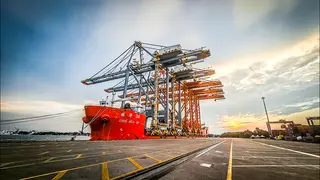The Cabinet may soon approve creating a new authority on interlinking of rivers for which the Jal Shakti Ministry has already sent the proposal. The interlinking of rivers is expected to increase water availability significantly helping the government to fulfill its slogan of “har khet ko paani” (water for every field).
Speaking at an event on groundwater organised by Dhanuka Group in association with industry chamber FICCI on Tuesday, NITI Aayog member Ramesh Chand said, “Central Water Development Agency is being abolished now and instead, ‘Central Interlinking of River Authority’ is being set up. A bill for the same will come up before cabinet soon. Views of NITI Aayog has been taken. It will be headed by Jal Shakti Minister. This will provide impetus to interlinking of rivers.”
Chand also said that under the directive of Supreme Court, interlinking of rivers commenced when Atal Bihari Vajpayee was the Prime Minister and 16 projects were identified then. But the projects got delayed due to lack of consensus between States on how to make canal or dam around it, he added.
The cabinet in December last year had approved central funding of ₹39,317 crore for the Ken-Betwa rivers linking project in Bundelkhand (Uttar Pradesh and Madhya Pradesh), which is scheduled to be completed by 2030. The project will provide an annual irrigation of 10.62 lakh hectares, drinking water supply to a population of about 62 lakh and also generate 103 MW of hydropower and 27 MW solar power. The government hopes that success of this project will help carry out more interlinking of rivers.
A difficult task
Inter-state river disputes are so intrinsic for regional parties that even Supreme Court treads cautiously in delivering orders and unless there is political consensus, interlinking is a very difficult task to achieve, an expert said.
Chand said that though the availability of water in the country is increasing, it is not commensurate with demand. “This gap has its own reasons, consequences, and explanations. The biggest explanation is that during last 30 years, our cropping pattern, technique of crop cultivation and preferences have turned water-intensive,” Chand said.
He said that the quantity of water consumed for producing one kilogram of the crop has increased over the decades and land used for producing that one kilogram of the crop has reduced over time. “It simply means, we always focused on productivity of crop per hectare and did not give required attention towards the water used for growing crops,” Chand said.
“Around ₹17,000 crore was spent annually during the period 1993-2014 on medium and minor irrigation projects, but the canals were either reduced or were stagnant during this period,” Chand said. He wondered where the money spent had gone.
Addressing the event, Dhanuka Group Chairman R G Agarwal emphasized on adoption of modern technologies for agricultural purposes. He also suggested creating awareness about water conservation among students.








Comments
Comments have to be in English, and in full sentences. They cannot be abusive or personal. Please abide by our community guidelines for posting your comments.
We have migrated to a new commenting platform. If you are already a registered user of TheHindu Businessline and logged in, you may continue to engage with our articles. If you do not have an account please register and login to post comments. Users can access their older comments by logging into their accounts on Vuukle.